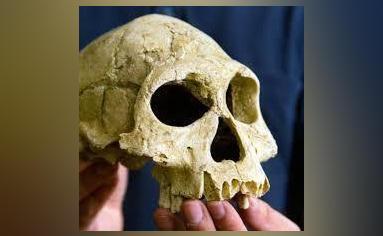
Males were Larger than Females in Some Human Ancestors: Study
A recent study has shed light on the physical characteristics of some of the earliest known human ancestors, revealing a surprising trend: males were significantly larger than females. The research, published in the American Journal of Physical Anthropology, focused on the Australopithecus afarensis and Australopithecus africanus species, and the findings have significant implications for our understanding of human evolution.
According to the study, the males of these ancient human species were larger than their female counterparts due to a phenomenon known as sexual dimorphism. This means that the males of these species had evolved to be bigger and stronger than the females, likely as a result of competition among males for mating opportunities and resources.
The researchers analyzed the fossil records of the Australopithecus afarensis and Australopithecus africanus species, which date back to around 3.8 million to 2.9 million years ago. They found that the males of these species were, on average, 15-20% larger than the females in terms of body size and muscle mass.
This is a significant difference, and one that is not seen in modern human populations. In fact, in most modern human societies, there is very little to no difference in body size between males and females. However, in the early human ancestors studied, the males were much larger than the females, likely due to the intense competition among males for mating opportunities and resources.
So, what drove this trend of larger males in these early human ancestors? The researchers suggest that it was likely due to a combination of factors, including the competition among males for mating opportunities and resources, as well as the need for males to be able to protect themselves and their mates from predators and other threats.
In addition, the researchers point out that the females in these early human species likely had different priorities than the males. Females, for example, would have needed to conserve energy and resources for pregnancy and lactation, which would have placed a greater energy demand on their bodies. As a result, the females may have evolved to be smaller and more efficient in their energy use, allowing them to allocate more energy to reproduction and childcare.
The study’s findings have significant implications for our understanding of human evolution. They suggest that the evolution of humans was more complex and nuanced than previously thought, with different selective pressures acting on males and females. The results also highlight the importance of considering the social and ecological context in which human evolution occurred, rather than simply focusing on individual characteristics.
In conclusion, the study of the Australopithecus afarensis and Australopithecus africanus species has provided valuable insights into the physical characteristics of early human ancestors. The findings suggest that males were significantly larger than females in these species, likely due to competition among males for mating opportunities and resources. The results also highlight the importance of considering the social and ecological context in which human evolution occurred, and provide a new perspective on the evolution of human physical characteristics.
Source:






